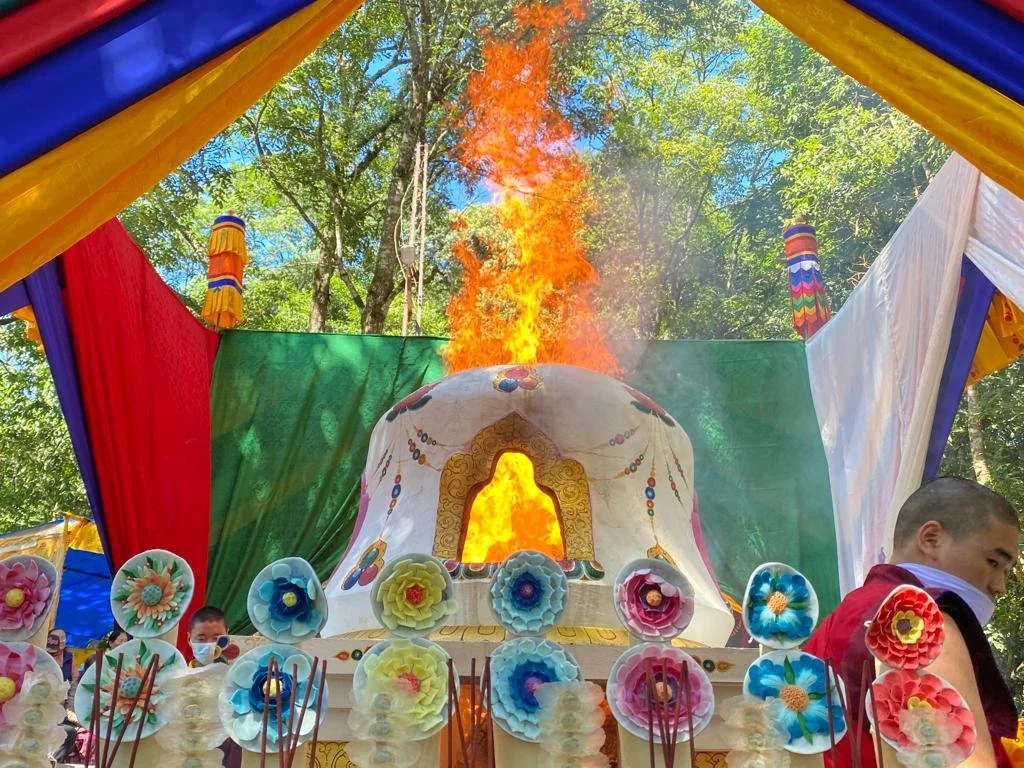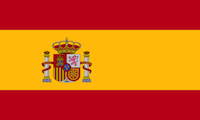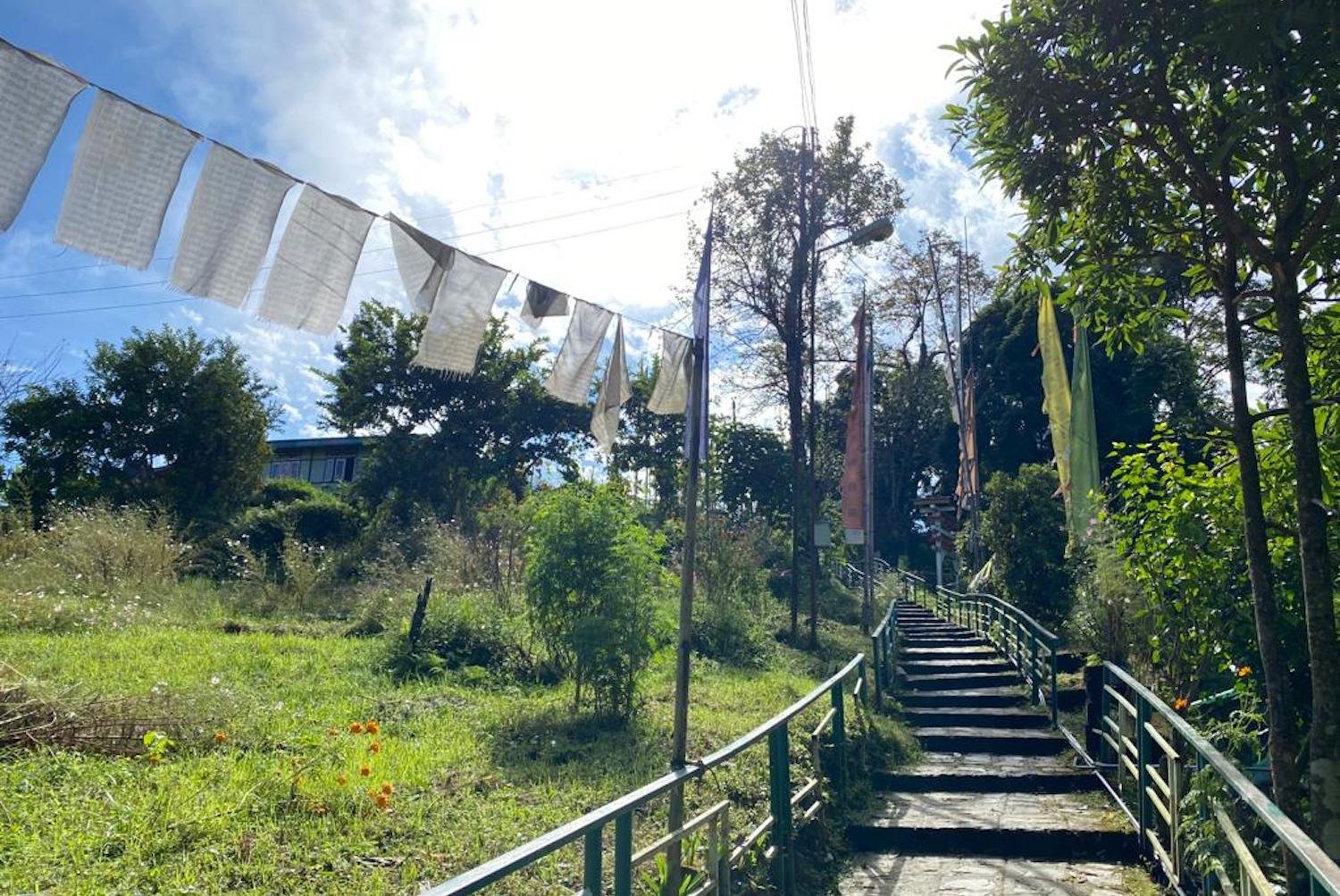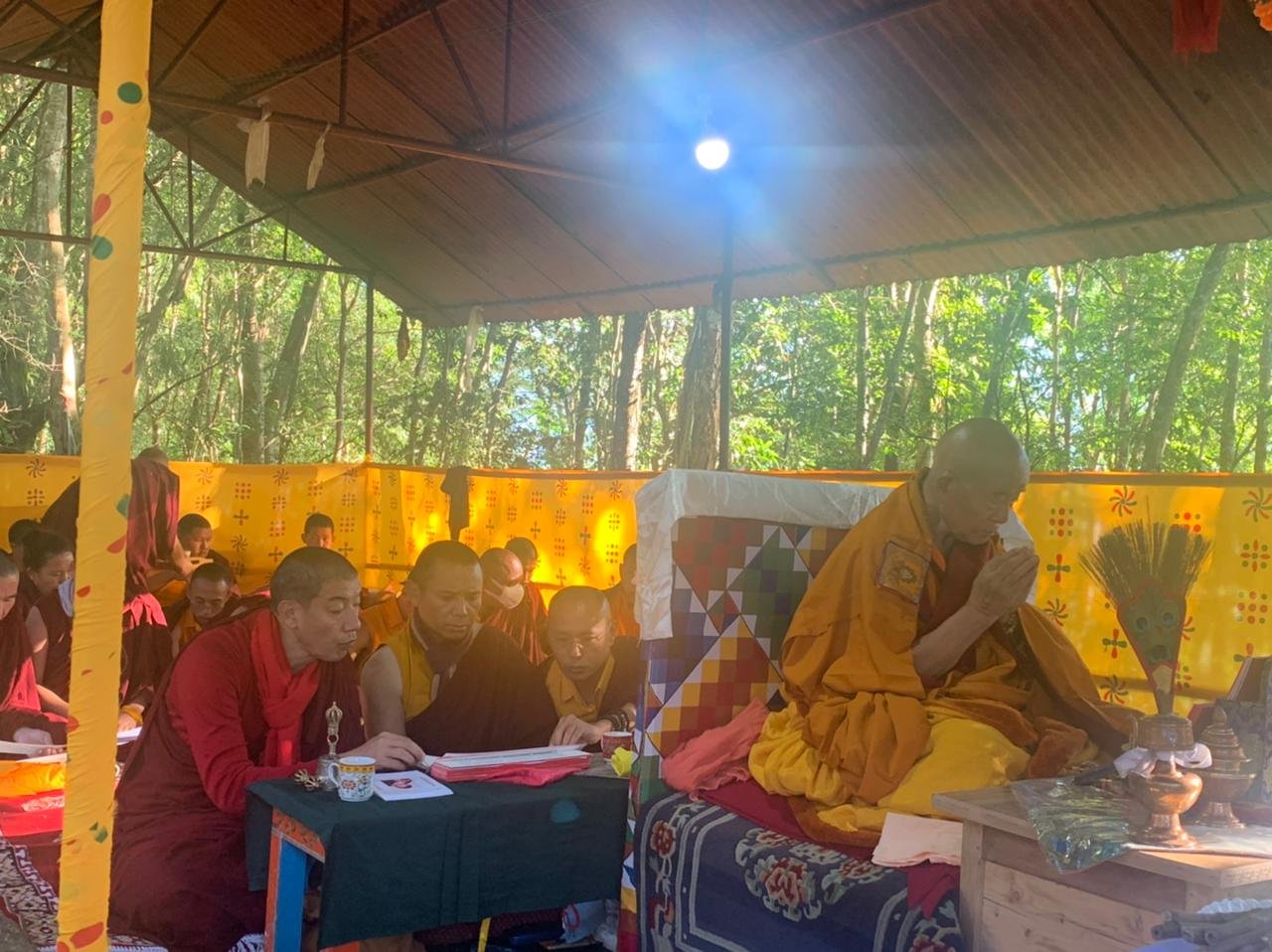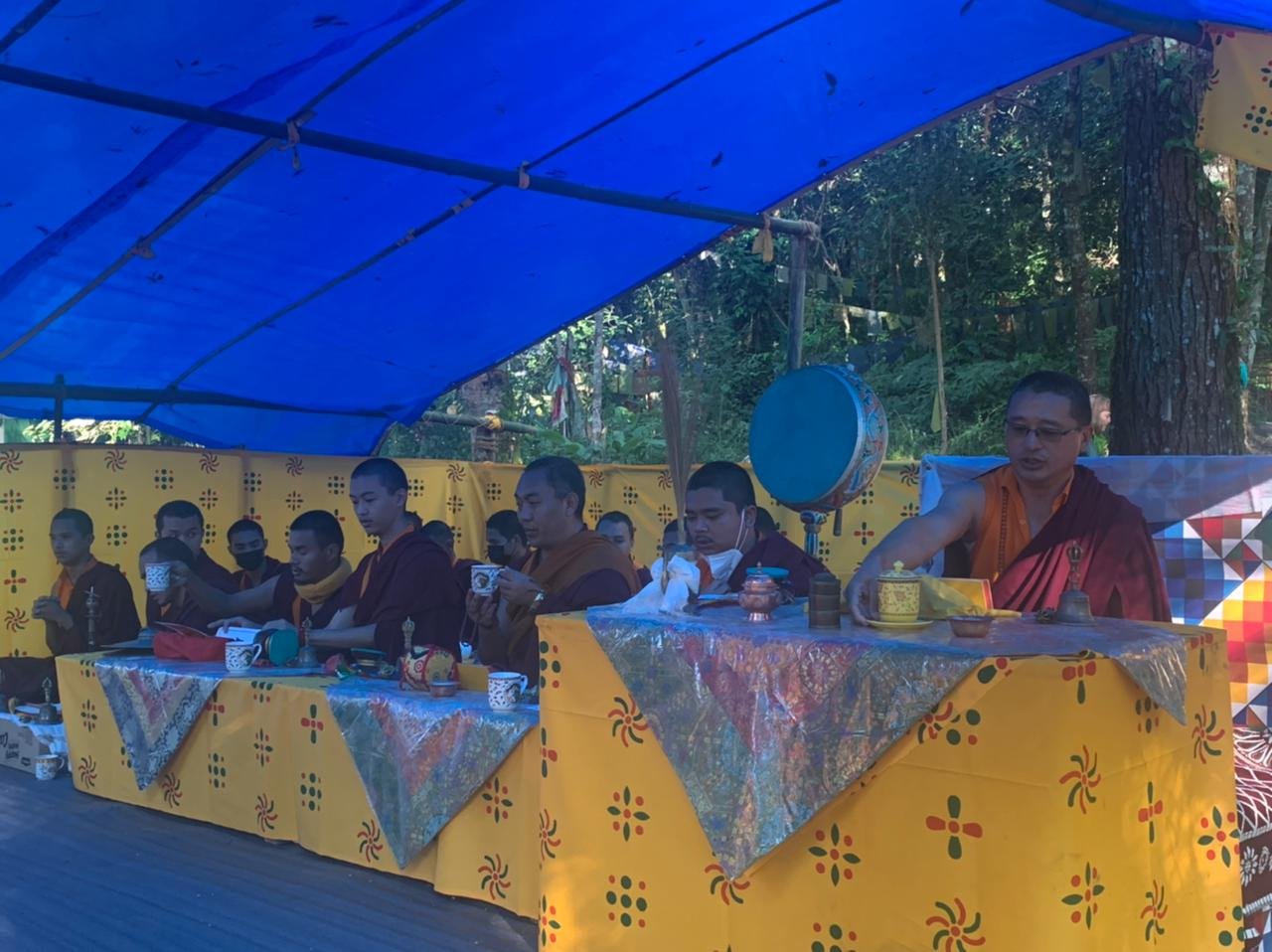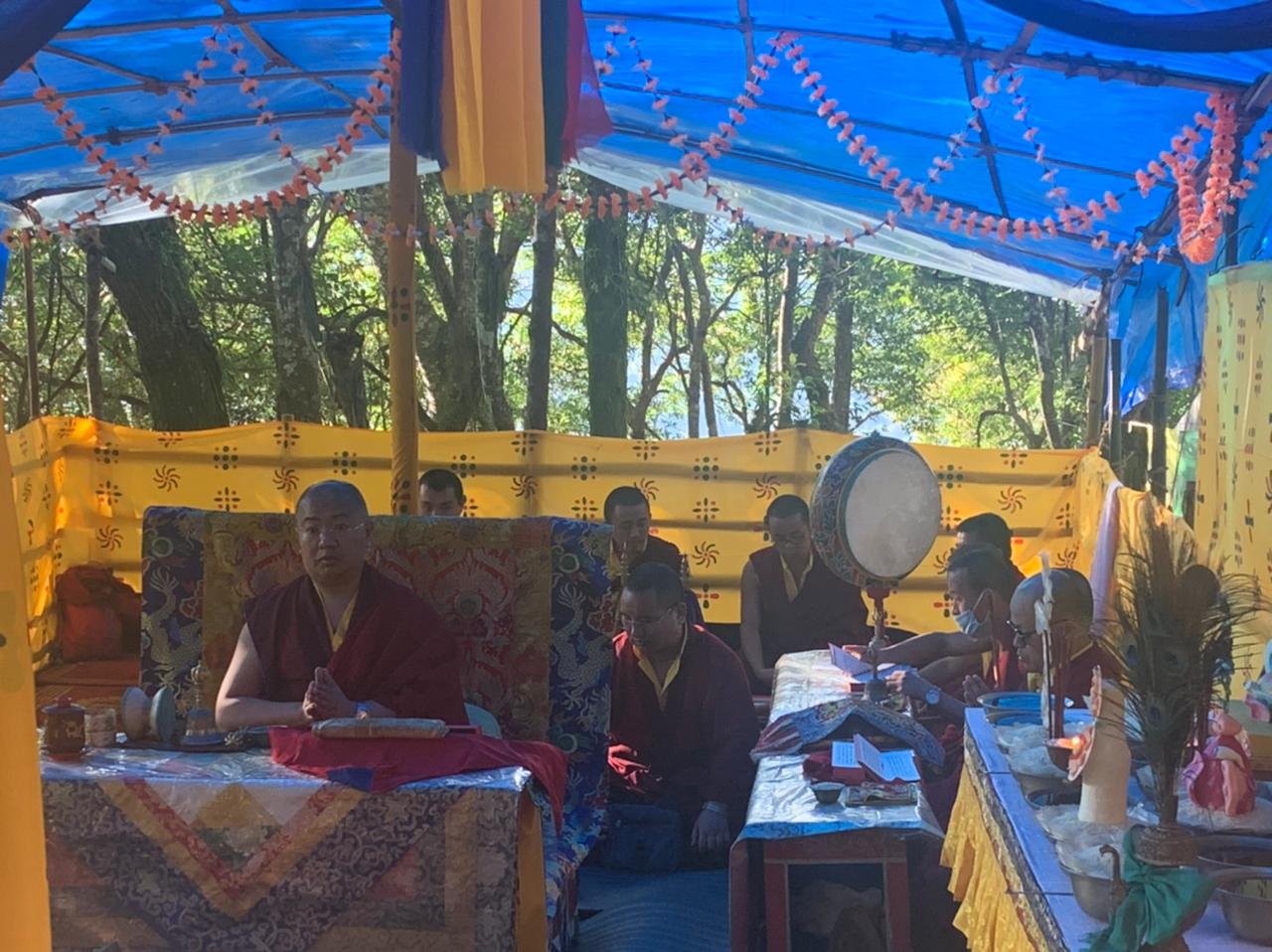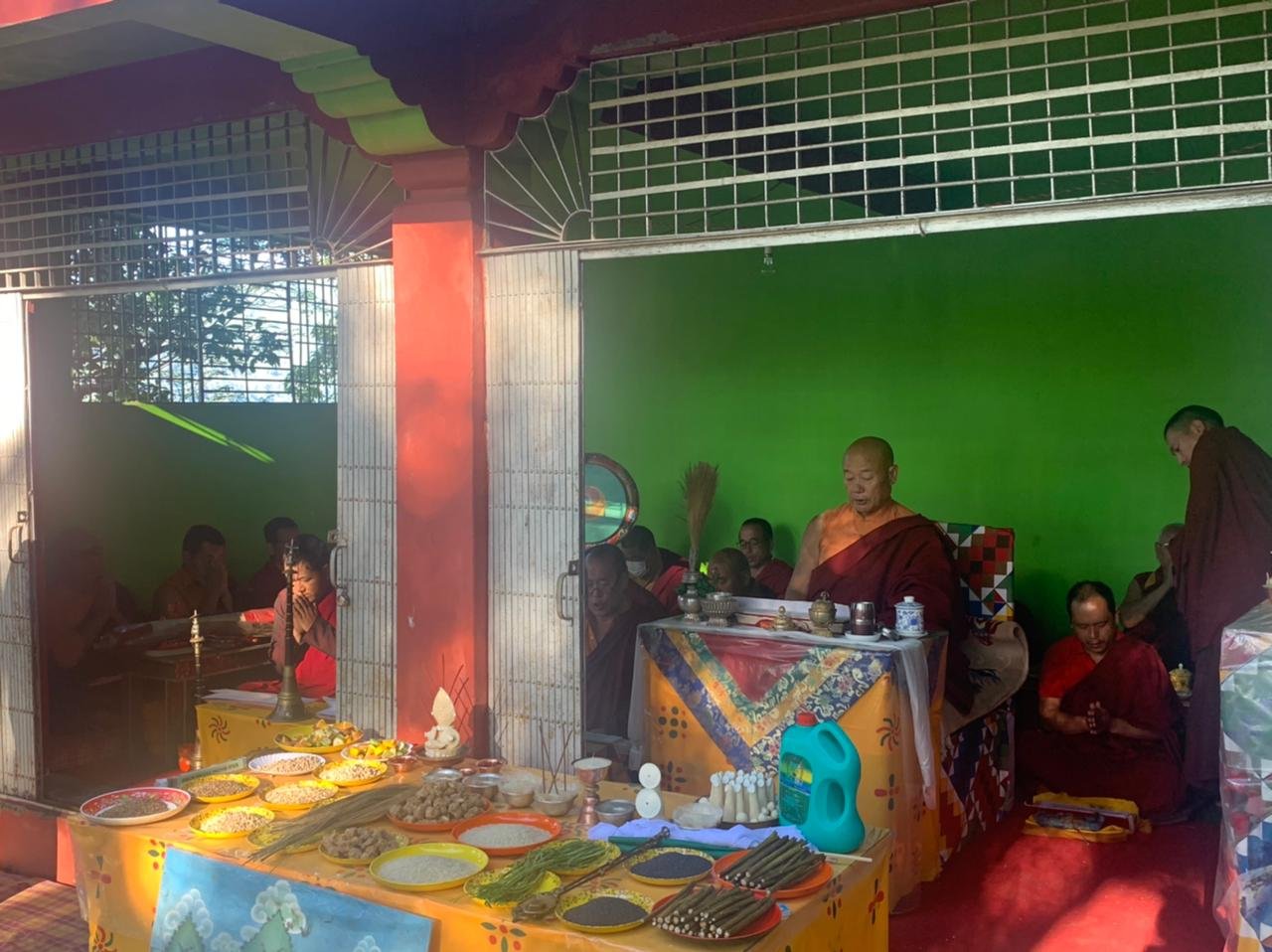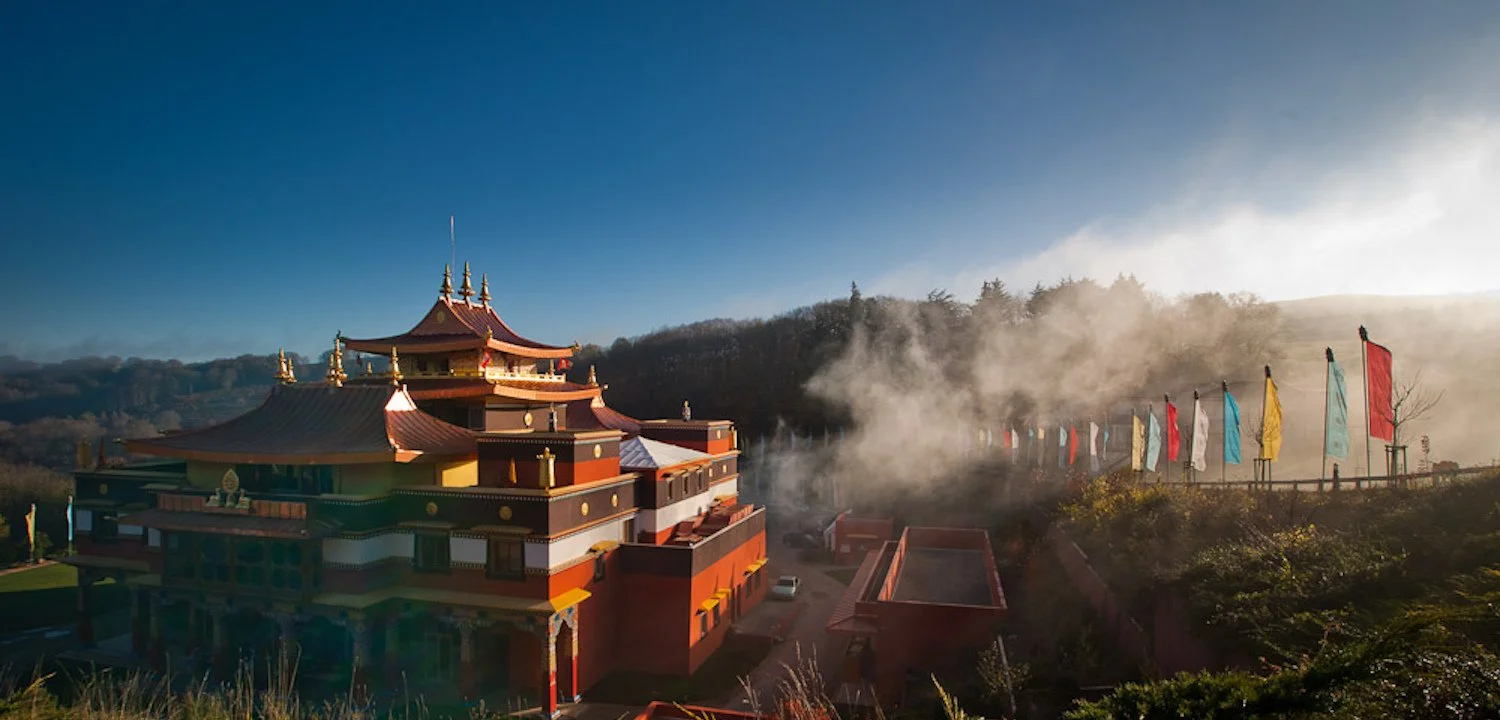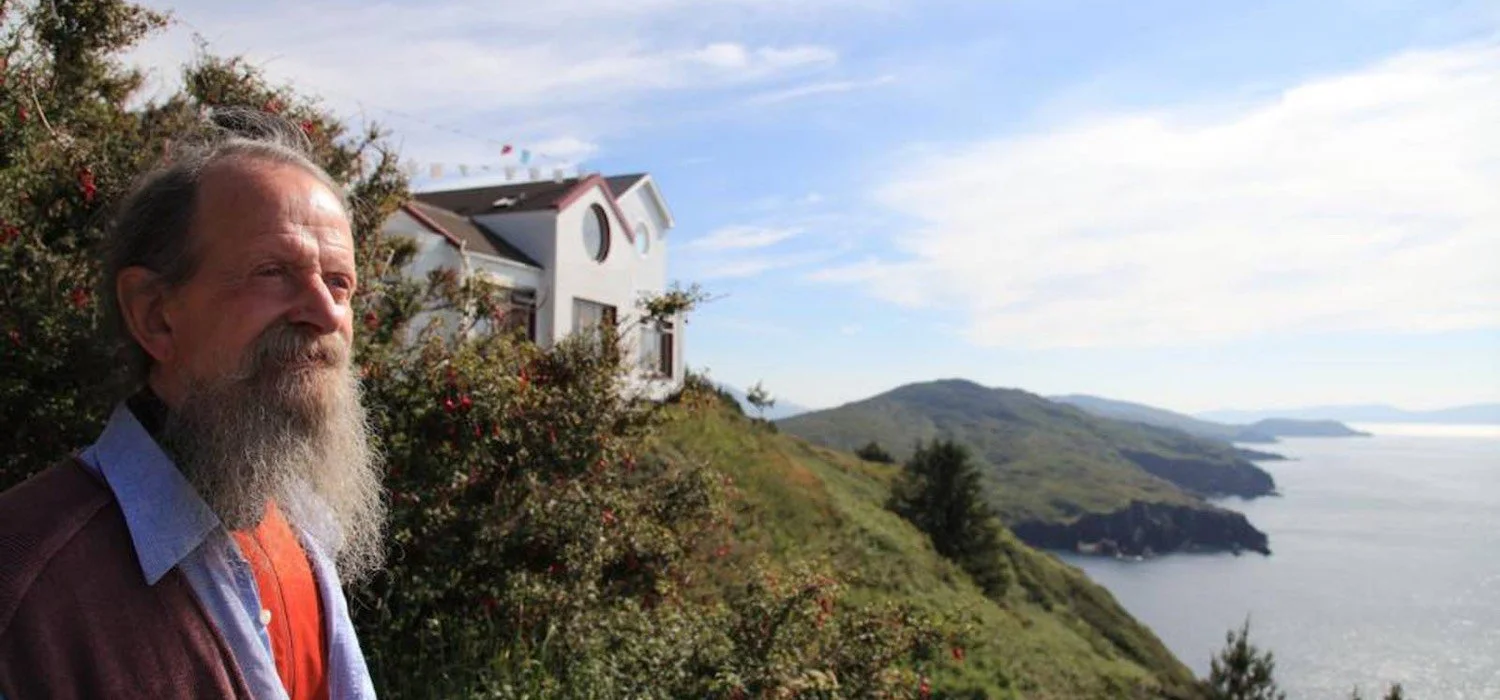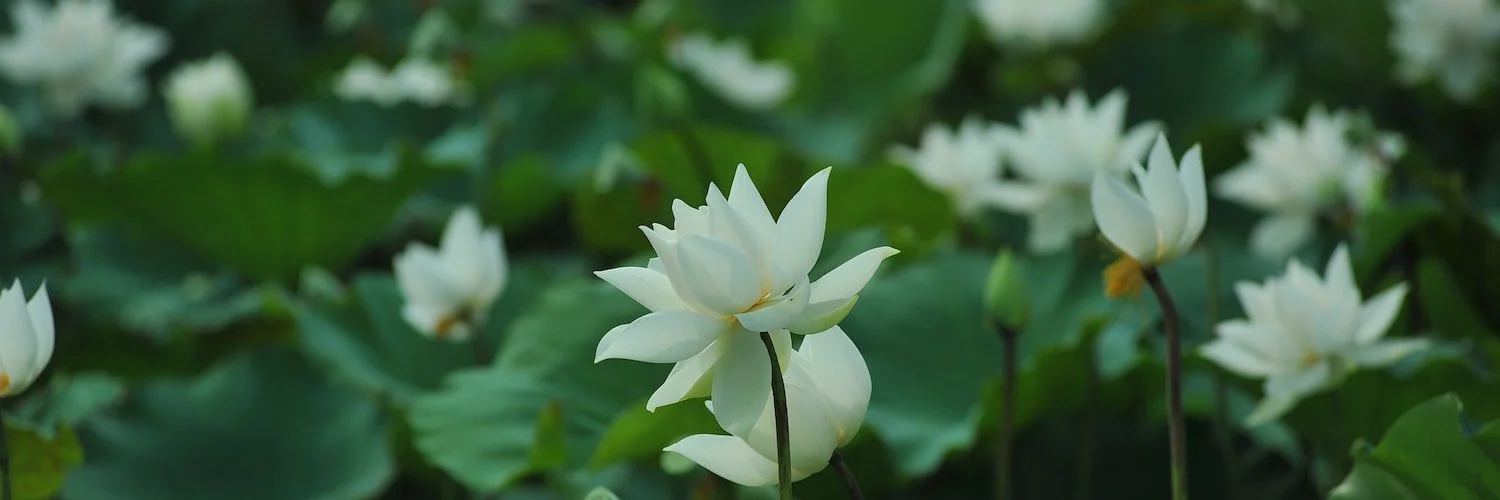Mayum Pema Tsering Wangmo's Cremation Ceremonies
Paul and Anja, Rigpa sangha members
On 14 October, Mayum Pema Tsering Wangmo was cremated in a traditional ceremony in Tashiding, Sikkim. Sangha members Paul and Anja share their experience of the occasion.
▶️ You can also watch a short video of the ceremony here.
Entering the sacred land
Entering Sikkim and starting the climb up into the mountains is itself extraordinary! After you pass the first cave of Guru Rinpoche it is like entering a sacred realm, another dimension in this hidden land. This year's monsoon season stretched on much longer than usual, washing out roads, which made the journey through Sikkim particularly difficult this year. The effort, merit and perseverance it takes to actually reach the sacred land of Tashiding is quite remarkable.
Preparing the environment
For several weeks before the dungshyu (cremation ceremony), monks from Chorten Gonpa, the monastery of Dodrupchen Rinpoche in Gangtok, Sikkim, monks from Dzogchen Monastery, India, Dikki-la the wife of the late Tigyal Lakar Mayum-la’s son, and staff from Tashiding were making preparations such as building the phurkhang (cremation stupa) and preparing the surrounding area for the practices to take place and to welcome many guests. Then, in the week leading up to the cremation around 15-20 Rigpa students arrived to continue the many preparations.
Watch the preparations for Mayum-la’s dungshyu
The kudung arrives
Sikkim was the land where Mayum-la, as part of the entourage of Jamyang Khyentse Chökyi Lodrö took refuge when fleeing Tibet in 1950s. As she now returned, Mayum-la’s kudung was met with great respect everywhere. On arrival in Bagdogra, the kudung was transferred to the Chorten Gonpa ambulance that had been beautifully decorated with brocade and flowers, inside and out. A convoy of seven cars and a mini bus (with 26 people in total, including Mayum-la’s daughter Dechen-la and grandaughter Pema) followed the ambulance all the way on the eight-hour journey to Tashiding. Almost miraculously, despite the rough road conditions, the ambulance and convoy managed to smoothly reach Tashiding without any obstacles.
As is tradition for highly respected lamas, Mayum-la’s kudung was welcomed in stages. First, as the convoy crossed the bridge that enters the area of Tashiding, it was greeted with offerings of tea by Changchup-la niece of Kyabjé Yangthang Rinpoche and Khyentse Tulku with the entourage of Yangthang Rinpoche’s monastery and villagers from nearby Yuksum. Then upon entering Tashiding village the kudung was again met with a formal welcome and tea by the local Tashiding community. Finally, after the last stages of the drive up to the Tashiding gompa, followed by motorcycles carrying gesar flags, Mayum-la’s kudung was welcomed by Rigpa sangha members and was carried in a formal procession up the steep pathway to the gonpa by those who had been her carers in Lerab Ling and several of the Bhutanese sangha, where she was placed in a beautiful Tibetan-style tent.
The steep path up to the Tashiding gompa
Recalling affectionately Mayum-la’s love of taking scenic drives (cham cham) and stopping in local cafes for cups of tea near her last home in Lerab Ling, France, some remarked that this journey to Tashiding was “Mayum-la’s last cham cham, and of course she has to stop for tea”.
After days and days of rain, at the moment Mayum-la’s kudung arrived, the rain stopped.
In a beautiful, moving gathering, soon after Mayum-la’s kudung arrived at the Tashiding gonpa, a group of local Sikkimese women came to sit and recite the mani mantra in the presence of the kudung. This felt like a show of deep respect and appreciation for Mayum-la, as well as recognition of the dharma practitioner in each other. There was a soft, calm communion amongst the women in the semi darkness, held by the quiet hum of the mani mantra.
We awoke the following day to a brilliant clear blue sky! It was as if this was the moment that the monsoon finally stopped. After not being visible for weeks, Kangchenjunga, the third highest mountain in the world and the abode of the great protector of Sikkim, was on full display on the horizon.
Kangchenjunga on the horizon, the morning of the dungshyu
That morning, Khenchen Lha Tshering of Tashiding, together the lamas and monks of Tashiding Monastery and the Rigpa sangha carried the kudung in procession, doing khora around all the mani walls and stupas including Jamyang Khyentse Chökyi Lodrö’s golden stupa. After three khoras around the monastery the kudung was brought into the main Chogyal Lhakhang where the Tashiding lamas and monks performed the practice of Thukje Chenpo Khorwa Ledrol.
Cremation Day ceremonies
On the day of the cremation, in four directions surrounding the phurkhang (cremation stupa) the dungshyu was presided over by a number of lamas who have a close connection with Mayum-la and the Rigpa sangha—Khenchen Pema Sherab Rinpoche with the tulkus, lamas and monks from Namdroling Monastery who performed Dorsem practice; Yakze Tulku, Orgyen Rigzin son of Dzogchen Rinpoche and Dzogchen Khenpo Jamphel Tenzin from Dzogchen Monastery in India who performed Shitro practice (hundred peaceful and wrathful deities); Gompo Tulku Rinpoche and lamas and monks from Chorten Gompa who practised Dukngal Rangdrol; and Khenchen Lha Tshering with lamas and monks from Tashiding who performed chenrezig practice. During the cremation the Rigpa sangha group present practised Tendrel Nyesel and Narak Kong Shak.
Photos: The lamas and monks presiding over the dungshyu
To us, it felt particularly significant that Khenchen Pema Sherab Rinpoche, made the journey to Tashiding for Mayum-la’s last stage. As Rigpa students, it felt comforting that he was there, as he had grown so close to Mayum-la, especially in the last few years when he spent many months each year with her in Lerab Ling.
It was also highly significant that Orgyen Rigzin - the son of Dzogchen Rinpoche and Mayum-la’s grandson, was also one of the main lamas presiding over the ceremonies. It was an illustration of the continuation of the Lakar family lineage of dharma practitioners and leaders.
Mayum-la’s daughter Dechen and granddaughter Pema were present throughout all the stages of the ceremonies, as well as Dikki-la and the two princesses of Sikkim. Mayum-la’s grandchildren Pema Chokyi and Jigme together with his wife Tashi and their son Garwang joined the cremation briefly.
As a reflection of Mayum-la’s way of being throughout her life, the ceremonies themselves were completed in a very unassuming and understated way, yet everything was meticulously complete. It all unfolded naturally and perfectly without any problems or obstacles under a clear blue sky.
The phurkhang (cremation stupa)
Blue sky above the cremation ceremony
One of Mayum-la’s carers commented that, for them, being present and participating in the dungshyu ceremonies was a way to care for Mayum-la all the way through to the end.
On the third day after the cremation, Mayum-la’s relics were collected by the Rigpa monastics in ceremonies led by two of the lamas from Chorten Gonpa and two of the lamas from Tashiding monastery. It was noticed that even after the hours of fire of the cremation, the inside of the phurkhang was still white.
-----------------
All those who joined Mayum-la’s dungshyu would have their own stories and experiences to share about this beautiful occasion. We hope these brief reflections of our experience give some insight and inspiration into the last moments of Mayum Tsering Wangmo’s time in this life.
We pray that Mayum-la’s enlightened activities flourish, continue to bring vast benefit to beings.
-----------------
*kudung = refers to the sacred body of a great master who has passed away.
☟SCROLL to the bottom of the page to share your comments.
